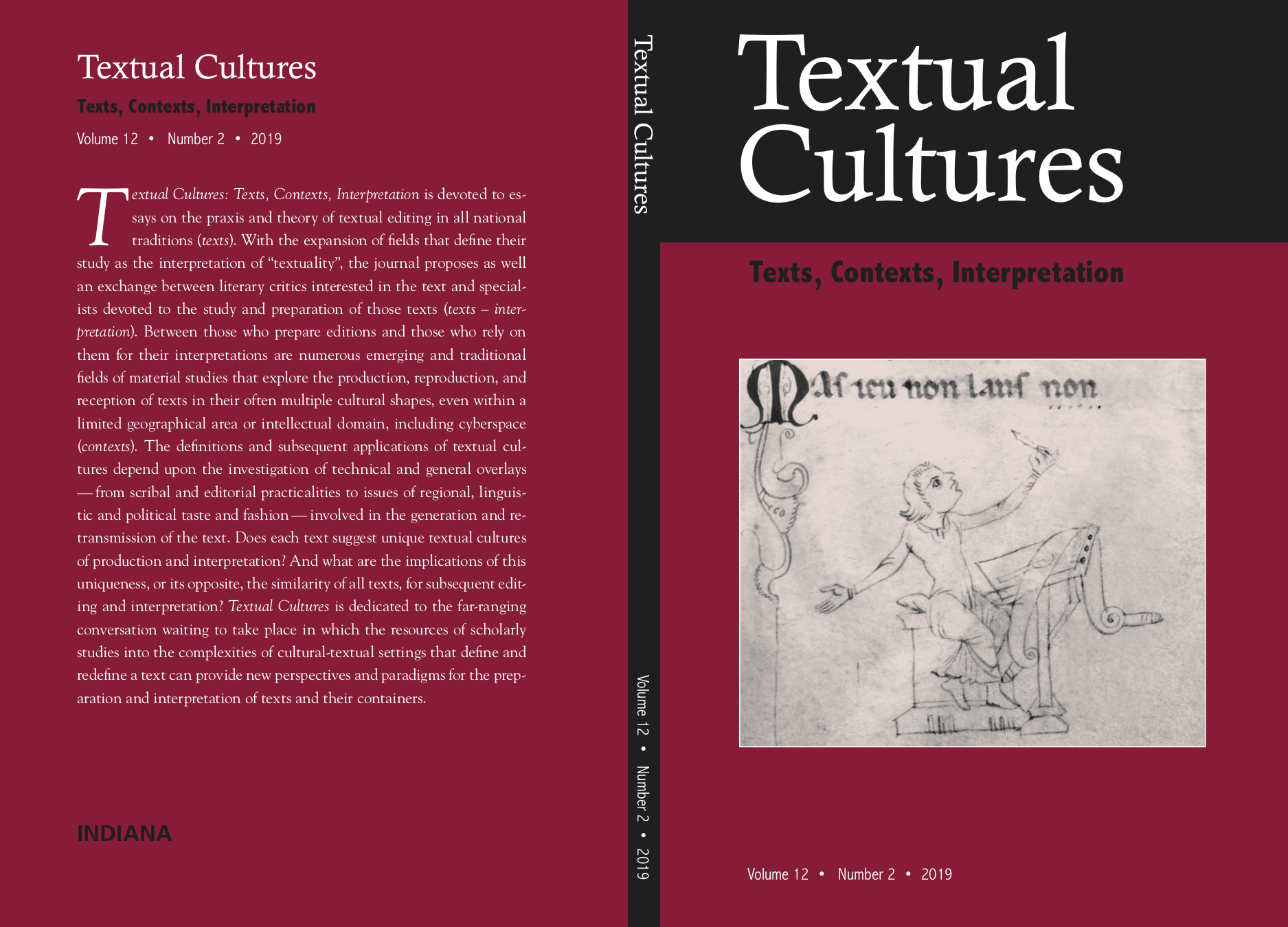Designing an advanced software tool for Digital Scholarly Editions: The inception and development of EVT (Edition Visualization Technology)
Main Article Content
Abstract
The increasing dissemination of Digital Scholarly Editions has highlighted not only the great potential of this method of publication, but also a good number of theoretical problems that affect both the DSEs as editorial products, and the impact of tools and methods of computer science on the methodology of textual criticism. On the one hand, the editions published so far are an evolution of the practice of ecdotics and represent not only a col- lection of interesting experiments, but also innovative and effective research tools. On the other hand, however, the limits within which an author of digital editions is forced to operate and the most appropriate strategies to minimize their impact have not yet been thoroughly investigated. The adoption of IT tools and methods, in fact, provides many answers to the requests of digital philologists, but the very nature of these tools imposes very strict modes of action, sometimes perceived as too rigid by the scholar. This article presents and describes a software tool that comes at the end of the process of creating a digital edition, to be used in that crucial phase when the edition is prepared for publication on the Web. The aim is not to show the more technical aspects of this tool, even if its fundamental characteristics will be introduced to better understand the terms of the issue, but to describe its genesis and development, and to highlight how visualization software represents a crucial element of the whole editorial process.
Downloads
Article Details
Authors who publish with this journal agree to the following terms:
- Authors retain copyright and grant the journal right of first publication with the work simultaneously licensed under a Creative Commons Attribution License (see:http://creativecommons.org/licenses/by/3.0/us/) that allows others to share the work with an acknowledgment of the work's authorship and initial publication in this journal.
- Authors warrant that their submission is their own original work, and that they have the right to grant the rights contained in this license. Authors also warrant that their submission does not, to the best of your knowledge, infringe upon anyone's copyright. If the submission contains material for which an author does not hold the copyright, authors warrant that they have obtained the unrestricted permission of the copyright owner to grant Indiana University the rights required by this license, and that such third-party owned material is clearly identified and acknowledged within the text or content of their submission.
- Authors are able to enter into separate, additional contractual arrangements for the non-exclusive distribution of the journal's published version of the work (e.g., post it to an institutional repository or publish it in a book), with an acknowledgment of its initial publication in this journal.
